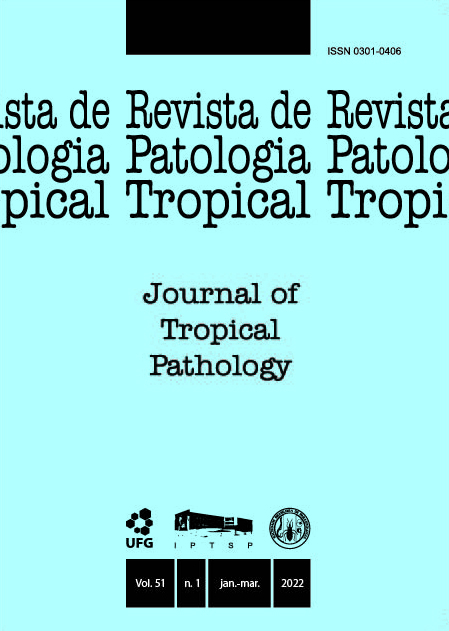Prevalence of tungiasis in humans in Brazil and in its federative units: a systematic review
DOI:
https://doi.org/10.5216/rpt.v51i1.70027Resumo
Tungiasis is a neglected parasitic disease caused by penetration of female Tunga penetrans under the skin, causing important health outcomes in humans. Therefore, the aim of this study was to describe the prevalence of tungiasis in Brazil and in its federative units. In November 2019, an investigation was carried out to find studies published from 1980 onwards in MEDLINE, LILACS, Cochrane, CINAHL, Scopus, Web of Science and Embase databases, and in the gray literature, using descriptors related to the prevalence of tungiasis caused by T. penetrans in Brazil. Of the 542 studies found, only 16 published between 2002 and 2010 met the eligibility criteria to be included in this systematic review. Of the 16 selected publications, 14 addressed the prevalence of tungiasis in communities in the Northeast region of the country, one in the South and one in the Southeast. The general prevalence of the parasitosis in the studies ranged from 1.6% to 54.8%, predominantly in the five to nine age group. Eight studies considered the prevalence by gender, ranging from 2.2% to 62.2% for females and 1.1% to 62.5% for males. This systematic review presents an unprecedented survey of the prevalence of tungiasis, a parasitic disease whose dissemination is facilitated by several factors, occuring mainly in low-income communities. Considering the regionalization of the findings, the scarcity of publications, as well as disease neglect, more studies are required.
KEY WORDS: Tunga penetrans; occurrence; epidemiology; PRISMA; human.
Downloads
Downloads
Publicado
Como Citar
Edição
Seção
Licença
The manuscript submission must be accompanied by a letter signed by all authors stating their full name and email address, confirming that the manuscript or part of it has not been published or is under consideration for publication elsewhere, and agreeing to transfer copyright in all media and formats for Journal of Tropical Pathology.

